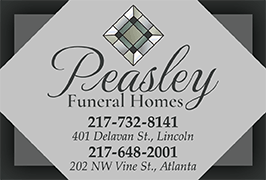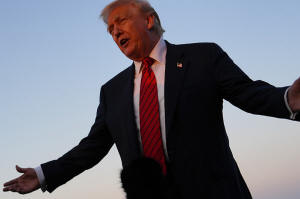FACT FOCUS: Trump says he's cut drug prices by up to 1,500%. That's not
possible
[August 05, 2025]
By MELISSA GOLDIN
Days after he sent letters instructing top pharmaceutical manufacturers
to use a “most favored nation” pricing model for prescription drugs,
President Donald Trump told reporters on Sunday that he had cut costs by
up to 1,500%.
But Trump’s grandiose claim is mathematically impossible.
Here’s a closer look at the facts.
TRUMP: "You know, we’ve cut drug prices by 1,200, 1,300, 1,400, 1,500%.
I don’t mean 50%, I mean 14 — 1,500%.”
THE FACTS: This is false. Cutting drug prices by more than 100% would
theoretically mean that people are being paid to take medications. The
Trump administration has taken steps to lower prescription drug prices,
but experts say there’s no indication costs have seen such a massive
drop.
Geoffrey Joyce, director of health policy at the University of Southern
California’s Schaeffer Center, called Trump’s claim “total fiction” made
up by the Republican president. He agreed that it would amount to drug
companies paying customers, rather than the other way around.
“I find it really difficult to translate those numbers into some actual
estimates that patients would see at the pharmacy counter,” said Mariana
Socal, an associate professor of health policy and management at Johns
Hopkins University who studies the U.S. pharmaceutical market. She added
that Trump’s math is “really hard to follow.”

Asked what Trump was using to back up his claim, White House spokesman
Kush Desai said: “It’s an objective fact that Americans are paying
exponentially more for the same exact drugs as people in other developed
countries pay, and it’s an objective fact that no other Administration
has done more to rectify this unfair burden for the American people.”
The White House provided a chart of price differentials for drugs in the
U.S. and comparable countries, but did not offer any other evidence. On
Sunday, Trump also described cuts to drug prices as a future
development, not that already happened.
“So we’ll be dropping drug prices,” he said. “It will start over the
next two to three months by 1,200, 1,300 and even 1,400%.”
[to top of second column]
|

President Donald Trump speaks with reporters before boarding Air
Force One at Lehigh Valley International Airport, Sunday, Aug. 3,
2025, in Allentown, Pa. (AP Photo/Julia Demaree Nikhinson)
 Prices for most prescription drugs —
unbranded generics are the exception — are higher in the U.S. than
they are in other high-income countries. This is in large part due
to the way drug prices are negotiated in the United States.
Trump made his recent appeal in letters to 17 pharmaceutical
manufacturers, the White House announced last week. He asked them to
reduce costs in the U.S. by matching the lowest prices of
prescriptions drugs in other comparably developed countries. Some
drugmakers have since indicated that they are open to cutting costs.
This move follows an executive order Trump signed in May setting a
30-day deadline for drugmakers to electively lower prices in the
U.S. or face new limits in the future over what the government will
pay.
The federal government has the most power to shape the price it pays
for drugs covered by Medicare and Medicaid. It’s unclear what — if
any — impact the Trump administration’s efforts will have on
millions of Americans who have private health insurance.
Socal pointed out that if drug manufacturers had cut costs to the
extent Trump claims, they would be shouting it from the rooftops,
especially given the heat they’ve taken over the years for their
pricing practices.
“My expectation would be that they would make announcements — public
announcements — and that those announcements would come way in
advance of the actual effective dates when those price cuts would
come into effect,” she said.
Joyce agreed that there has been no indication of a substantial cut.
“Not at all, not at all, none whatsoever,” he said. “And let alone
1,500.”
All contents © copyright 2025 Associated Press. All rights reserved |